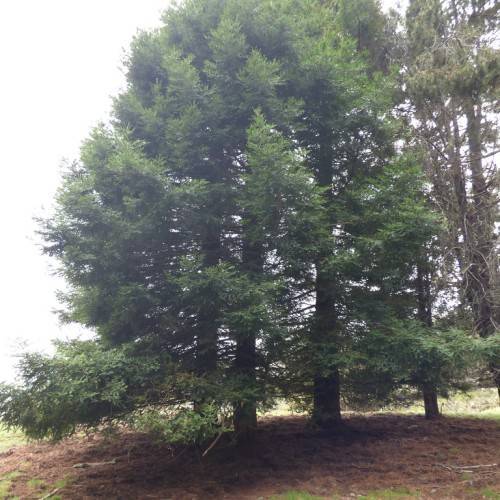
redwood
Sequoia sempervirens
Cycle:
Perennial
Watering:
Average
Hardiness Zone:
7 - 9
Flowers:
Flowers In Winter
Sun:
Full sun
Soil:
Acidic, Well-drained
Cones:
Yes
Growth Rate:
Moderate
Maintenance:
Moderate
Salt Tolerant:
Yes
Care Level:
High
watering
Redwood trees require moderate amounts of water, especially during the summertime when they are actively growing, but they must be kept moist at all times. During the cooler winter months, the amount of water required decreases considerably. In general, Redwood trees should be watered deeply every 5-7 days during the spring through summer months, and every 10-14 days in the winter. You should use a slow-release watering system, such as a soaker hose or drip irrigation, with a timer to make sure the trees get a steady supply of water. If you use a sprinkler, water until the soil is quite moist, and be sure to not over-water your plants. Redwoods should never be planted in pools or ponds as this can lead to root rot. In general, an inch or 2 of water per week is sufficient, which can be monitored using a rain gauge. It is important to monitor soil moisture levels and watch for signs of stress, such as wilting leaves or yellowing branches, to ensure that the tree is getting the right amount of water without becoming oversaturated.
sunlight
Redwood trees (Sequoia sempervirens) prefer full sun and regular water. As an evergreen tree, redwoods need at least 6 or more hours of direct sunlight in order to thrive. Ideally they will receive 8-10 hours of direct sunlight (but not in the hottest part of summer). This is why they are often found growing in more northern climates, where the days are longer and the summers are cooler. They can also do well in partial shade, but should receive at least 4 or more hours of direct sunlight. When growing in direct sun, redwoods must also have access to plenty of moisture in order to fully benefit from the sunshine. This is because they have shallow roots that need to be kept moist. Additionally, the sun can dry out the leaves, causing distress and potential damage. A good balance of sunlight and adequate irrigation is the key to success when growing redwood trees.
pruning
For redwoods (Sequoia sempervirens), pruning should only be done for safety reasons, such as if branches are dead, diseased, damaged or rubbing against each other. Pruning should be done when the tree is dormant, typically late fall to early spring. Heavy pruning is not recommended, as it can damage the tree and growth may be affected by directional pruning. When pruning, make sure to remove the entire branch, as leaving stubs can promote rot. Additionally, prune branches that cross or rub against each other, branches with weak crotches and those that are dead. Take care not to remove too much foliage, as this can cause the tree stress.
